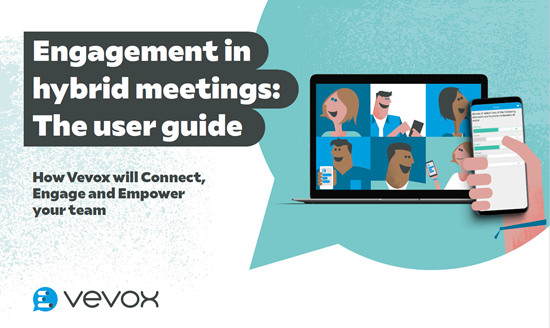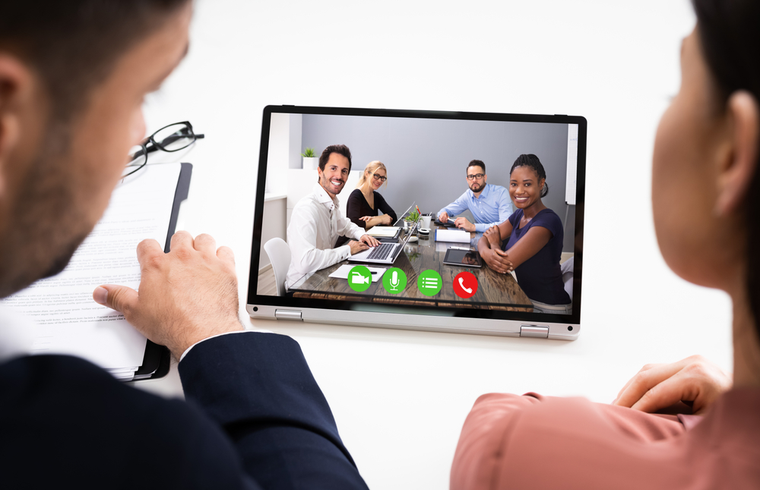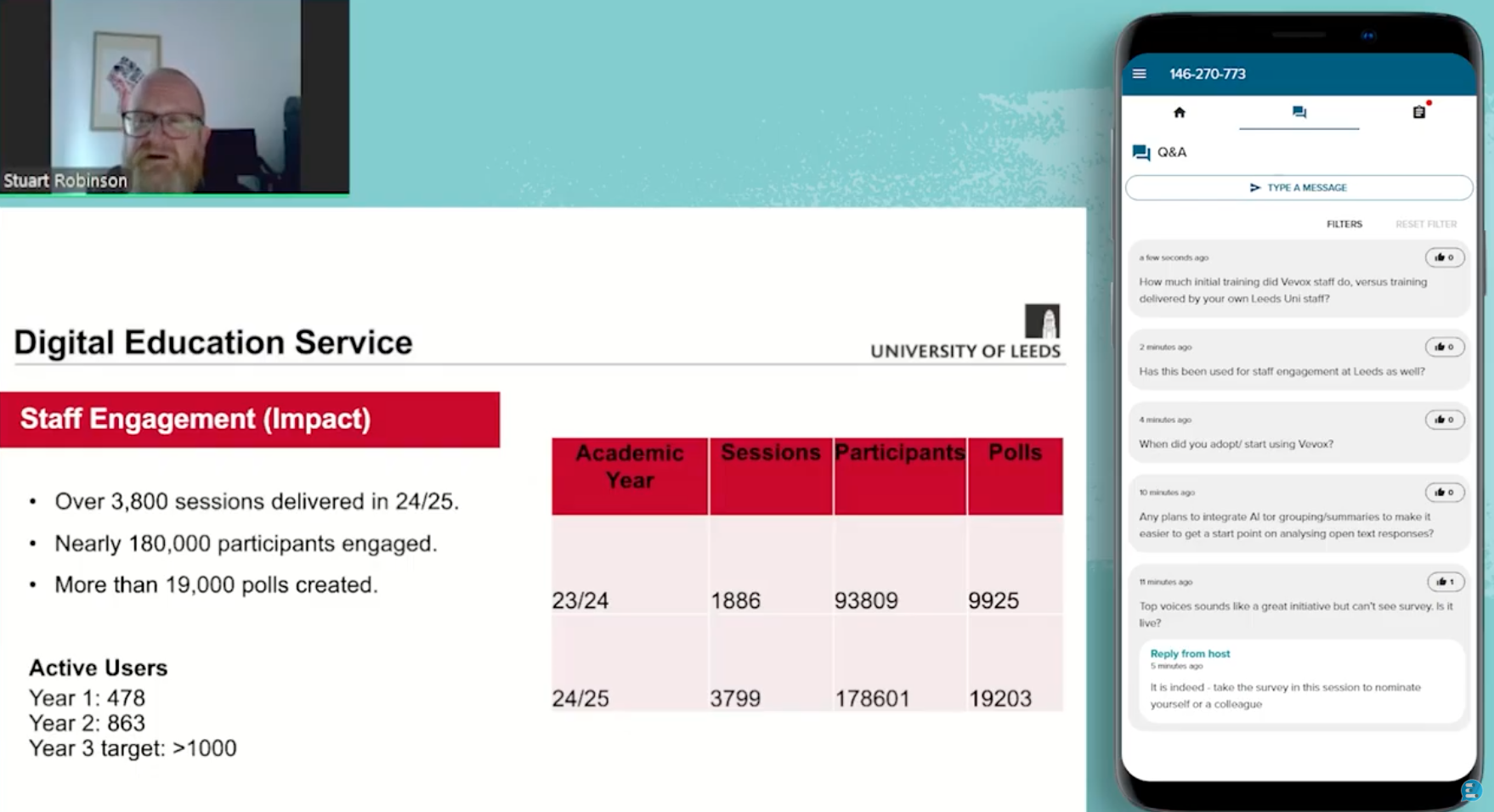With several surveys being done over the course of the pandemic, it's unsurprising that many people want to maintain the flexibility to have options to work remotely or in-person. Indeed, many people want to continue with working from home due to the benefits it presents including not travelling, not catching COVID or illnesses, reduce stress, increase productivity and a better work/life balance.
UK airline, British Airways said in a statement to the BBC on March 19, 2021, “Our aim is to find a hybrid working model that suits our business, blending the best of office and remote working for our people.”
A survey by RingCentral showed that "72% of people want to continue working from home because of the benefits it adds to their lifestyle". Large brands and organisations have already announced their position of offering working from home as the default such as Siemens.
What are hybrid meetings?
Hybrid meetings are meetings that involve two types of audiences, an in-person audience and a virtual one. The use of hybrid meetings is not new, and many companies have been offering both virtual or face-to-face attendance options for their meetings before the pandemic. However, due to the flexibility that organisations are now offering due to the impact of the pandemic and the culture shift into offering working from home, there will now be a rise in the use of hybrid meetings.
Like hybrid working, hybrid meetings offer benefits and challenges. The benefits being an increased audience reach, employees don't have to travel, a safer experience and a more compliant meeting to avoid carbon emissions or increased issues with spreading illness, increased flexibility and lower meeting costs.
One of the main challenges of hybrid meetings is offering a truly equal experience for both sets of audiences. Typically in-person audiences have more opportunities such as better audio or visual quality, more opportunities to be involved and feel the 'buzz' of the meeting and potential other benefits such as social experiences. Enabling virtual participants to experience the buzz of the meeting, being able to ask questions or be involved and to be truly engaged is important. By the same token, focusing completely on the virtual audience would alienate the in-person audience. This is why having a truly inclusive, equal and engaging hybrid meeting for all is key to the overall success.
How to maximise inclusion and engagement in hybrid meetings?
There are mutiple ways and best practices to increase engagement and inclusion in hybrid meetings. Here are a list of some of the key takeaways that we've experienced and our customers have shared with us.
1. Make your meeting transparent and equal for all:
- Invite virtual participants to be present on cameras to show their faces.
- Use a polling tool to gauge your workforce's opinions without making any assumptions. Collect live feedback from polls to make decisions more democratic and understand what all your employees are thinking in that moment in time.
- Make time for contributions from all locations and take in to allowance the delay from virtual participants if wanting to contribute verbally by having to unmute or 'raise their virtual hand'.
2. Give everyone a voice and focus the Q&A on the most popular audience questions or ideas:
- Don't let a particular person dominate the Q&A dialogue. It can be very easy to speak to someone in-person or have a side conversation but by using a Q&A platform that offers an equal playing field, it empowers your workforce whilst enabling you to gauge what is the most prevalent topics or questions that need to be answered in that moment in time.
- Anonymity can also help to remove the barriers to Q&A interaction.
- Remind your workforce of why their input is important, how it can help and establish some ground rules to set the tone of the meeting.
- It's all about audience equality and having that sense of control to make your meeting Q&A effective.
3. Think about your verbal and body language:
- If you keep referring or looking at one audience for instance your in-person attendees, then your virtual will very quickly become disengaged.
- Use inclusive language (no jargon or hidden meanings) and try to look at around the room/virtual cameras every so often if presenting in-the-room. Alternatively, wny not present or facilitate in a different location to avoid potential challenges like this.
4. Crowdsource ideas and involve everyone with live word clouds:
- By enabling participants to submit their one word answers or ideas on a live broadcast they can see what their other employees are thinking and collaborate altogether to create a strong sense of community, regardless of location.
- Word cloud polls are great for inclusive icebreakers that can get everyone involved and engaged from the off.
5. Invest in audio, visual and remote technology:
- Enhance the virtual and face-to-face experiences with good quality technology (eg. microphones, cameras, lighting, headphones for participants, a strong internet connection).
- Ensuring the audio and visual experience is of good quality for your remote attendees is important so they don't feel isolated.
- Providing an all-round experience that comes close, if not equal to the in-person audience is important to overall engagement and increasing collaboration.
So, what next?
Investing in your hybrid meetings does not need to be overly expensive or complex. Some of the key tips above show that facilitiation, how you use meeting tools and how the meeting is conducted is just as important. Creating an equal playing field for your virtual and in-person audience is crucial to creating true inclusion and engagement.
Want to learn how you can implement some of these tactics, tools and methods in your hybrid meetings to empower your workforce? Then download our FREE hybrid engagement meeting e-book here.

Why not share your tips with us for increasing engagment in hybrid meetings via our LinkedIn and Twitter using our handle @VevoxApp.




